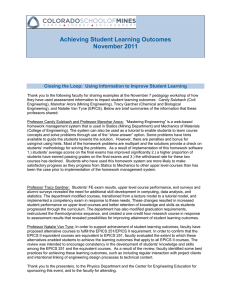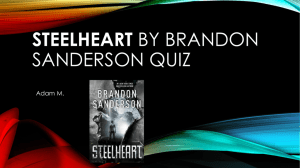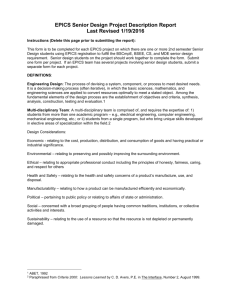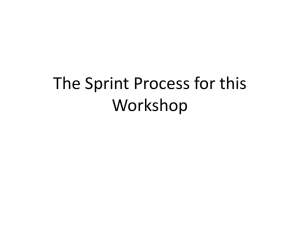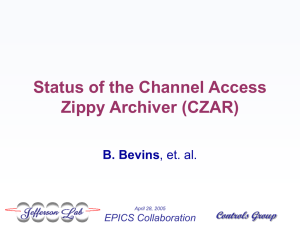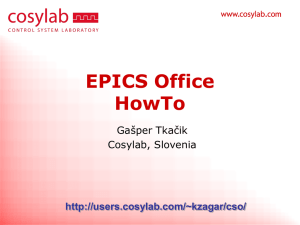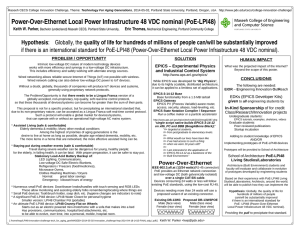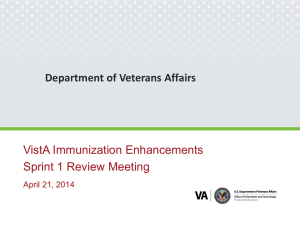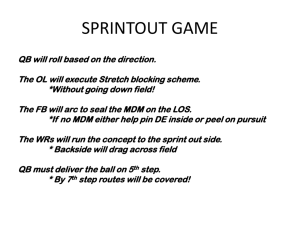Ch. 5: Requirements and User Stories
advertisement
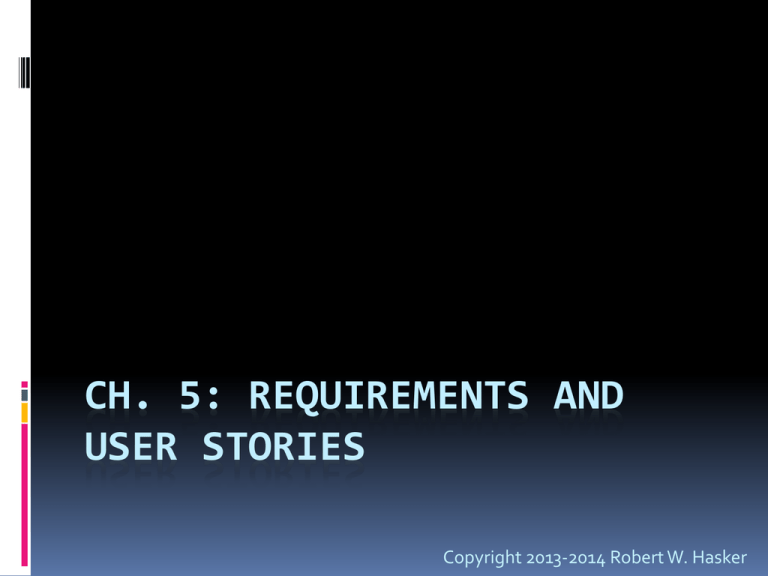
CH. 5: REQUIREMENTS AND USER STORIES Copyright 2013-2014 Robert W. Hasker Requirements-based Development System specification: series of “shalls” The registration system shall support lecture, discussion, and lab-based courses. The snowba shall clear sidewalks of up to 4 inches of snow. The snowba shall commence clearing snow when the depth is greater than ½ inch. Forms a contract Changes can be very expensive, so focus is on obtaining correct set of requirements early. Correctness Why “shall”? Ensures requirements distinct from discussion. Example: 4 inches is the maximum height allowed since greater heights would require wheels that are too large for a self-contained unit. What if we find errors later? Either an error in the contract or implementation. In practice, a large percentage of project failures trace to errors in requirements. Problem: natural languages are not always precise – is this model even feasible? Alternative to requirements PBIs could be requirements Could write lists of high-level and low-level requirements, organized by feature. Traditional requirements require lots of grooming. Alternative: Use cases Collection of detailed scenarios – advantages? Usual agile approach: user stories: As a user_role, I want to goal so that benefit. Light-weight requirement: focused on asking client for details rather than writing a contract. Agile manifesto: collaboration over contracts Elements of stories As a user_role, I want to goal so that benefit. As a homeowner, I want the snowba to commence clearing snow when the accumulation reaches ½” so that I do not have to pay the city to clear my sidewalk. user_role: how user interacting with system Same user might have multiple roles! goal: what user wants to achieve benefit: why – critical to understanding story How long should these stories be? What are the conditions of satisfaction? A matter of scale Stories can be very detailed: As a student, I want to see the total number of credits for the courses which I have added to my schedule so I can limit my workload. Stories can be very broad – epics. As a student, I want to take courses that allow me to complete major requirements so I can graduate in four years. Why can’t we just write epics? Why not have lots of detailed stories? How do epics and stories interact w/ the PB? Size hierarchy Time Unit Scale of Enclosing Entity Epic Months Product Feature/ Theme Weeks Release Story Days Sprint Task Hours The “three C’s” Card, Conversation, Confirmation Story Title As a <user role>, I want to <goal> so that <benefit>. Conditions of Satisfaction •Condition 1 •Condition 2 •Condition 3 Good stories I Independent N Negotiable V Valuable E Estimatable S Small (appropriate size) T Testable p. 88 • What do these qualities mean? • Why do we want them? How would we “test” stories? Best practices: integrate testing throughout product cycle So how to test a story? One solution: “Wizard of Oz” testing Nonfunctional requirements Definitions: A property of the system, not a specific operation Cross/cutting concerns/needs which apply to many user stories. Not bad Examples? Safety, security, performance, robustness Learnability, natural language support Traditional concern: hard to test How to handle in Scrum? Include in definition of done? Knowledge-acquisition stories Prototype/spike/experiment/proof of concept Example: evaluate alternative designs Key: repeatable results Why shouldn’t these be allowed? Why should they be allowed? How does the cost to unwind factor in? Knowledge-acquisition stories Prototype/spike/experiment/proof of concept Example: evaluate alternative designs Key: repeatable results Why shouldn’t these be allowed? Be suspicious of anything not delivering value Why should they be allowed? Important principle: fail fast How does the cost to unwind factor in? Gathering stories Who should do it? Should product owner be the sole team rep? Basic method: ask user Why might this not be effective? User-story-writing workshop What? Who? Why? How long? Goal? Steps: User role analysis: give names, personas to roles Brainstorm: bottom-up, top-down, story map Story Mapping: epics, themes, stories – p. 97 Often more focused on prioritization. Stories vs. Requirements Are stories just another form of requirements? Can document reqs in criteria Why wouldn’t reqs work as sprint tasks? Why might we still need a traditional requirements document? Safety critical systems: must trace requirements through project. Would stories be the most effective way to organize such requirements? Review Traditional requirements: shalls Collaboration over contract negotiation Stories Basic form As a user_role, I want to goal so that benefit. Non-functional requirements, knowledge acquisition Gathering stories User-story-writing workshop Story mapping Exercise: WheresMyClass app Epic: As a student, I want my phone to direct me to my next class so I avoid penalties for arriving late. Assumption: building floor plans uploaded to Google to allow showing location within building. Assumption: have API for finding current location and planning routes from current location to a target location. In-class exercise: write stories for this app. Jira Demo Create story Assign story points Create subtasks Move to current sprint Change status of story in sprint
